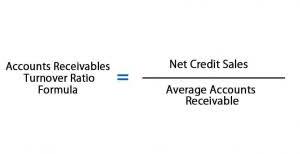
Hence, the cost per unit will be calculated as $1 (total cost of $150,000/150,000 reams of paper). Bubblez’n’More is a seltzer bottling firm that specializes in one-of-a-kind tastes. The filling department incurs $25,000 in direct material costs and $50,000 in conversion costs for the current month (consisting of direct labor and factory overhead). In April, the billing department’s per-unit cost is $.50 for direct materials (direct material prices divided by monthly unit output) and $1.00 for conversion costs (conversion costs divided by unit output). Similar calculations are performed for the labeling and packing divisions, and the corporation discovers that it cost $100,000 to make 50,000 bottles in one month.

While production systems usually depend on the type of goods a company produces, similar production processes may be involved in these types of systems. For example, in magazine production, production processes include printing, cutting, and stapling. Each process usually adds costs to the goods produced in a process costing system.
Best Account Payable Books of All Time – Recommended
It can be assessed based on the expectation that how much effort is needed in order to complete the process of production. (3) Group 3 has 7,300 (given) units started this month to be completed next month. (1) Group 1 consists of 5,900 (given) units started the previous month and completed this month. The first step is to classify the units into one of three groups in the whole units column based on when they were started and completed according to the information given. Joint products are two or more products generated simultaneously, by a singe manufacturing process, using common input, and being substantially equal in value. The same principles apply to the valuation of abnormal gain, where the gain occur part-way through the process as abnormal loss.
- If the total cost calculated across all departments to produce these units was $16,875, it means that the cost per unit will be determined by simply dividing the total cost of $16,875 by the 4,500 number of units.
- Our writing and editorial staff are a team of experts holding advanced financial designations and have written for most major financial media publications.
- Process costing is a method of costing used mainly in manufacturing where units are continuously mass-produced through one or more processes.
- A petroleum refinery is a perfect example of a process costing system environment since it is hard to trace the cost of a specific unit of oil as it passes through the refinery.
- Ore is introduced in the melting stage, alloys in the skimming stage, etc. (this is equally true for labor and overhead).
All production costs will be accumulated and allocate equally to all products by assuming that they are consumed the same resource. Accountants will calculate the total overhead cost of each month and separate them to each finished product at the month-end. Process costing determines the cost of each unit based on the overall costs of manufacturing departments or stages. The inclusion of non-production process costing examples costs in the computation can lead to errors. Process costing is more practical and simpler to use than other cost accounting systems, such as job costing, which requires recording the cost of each item and component part, as well as managing salary, other materials, and overhead. It yields a cost of goods manufactured (COGM) figure, which is frequently displayed on your company’s income statement.
Process Costing Accounting System Examples
Job order costing and process costing are the accounting systems used to record the costs expended to produce a product. Conversion costs are the direct labor and manufacturing overhead involved in the production process and exist regardless of the accounting system used. For example, in a food processing operation, the direct material (such as a cow) is added at the beginning of the operation, and then various rendering operations gradually convert the direct material into finished products (such as steaks). This process costing method is similar to the weighted average costing method, only that it uses an estimated standard cost for each process stage rather than actual costs.
- A student’s first thought is that this is easy—just divide the total cost by the number of units produced.
- Process costing is another method of keeping track of the costs of manufactured items.
- Yes, many services are produced in a manner similar to manufacturing goods.
- Examples of these types of companies include food manufacturers, bottling companies, printing companies, and other similar businesses.